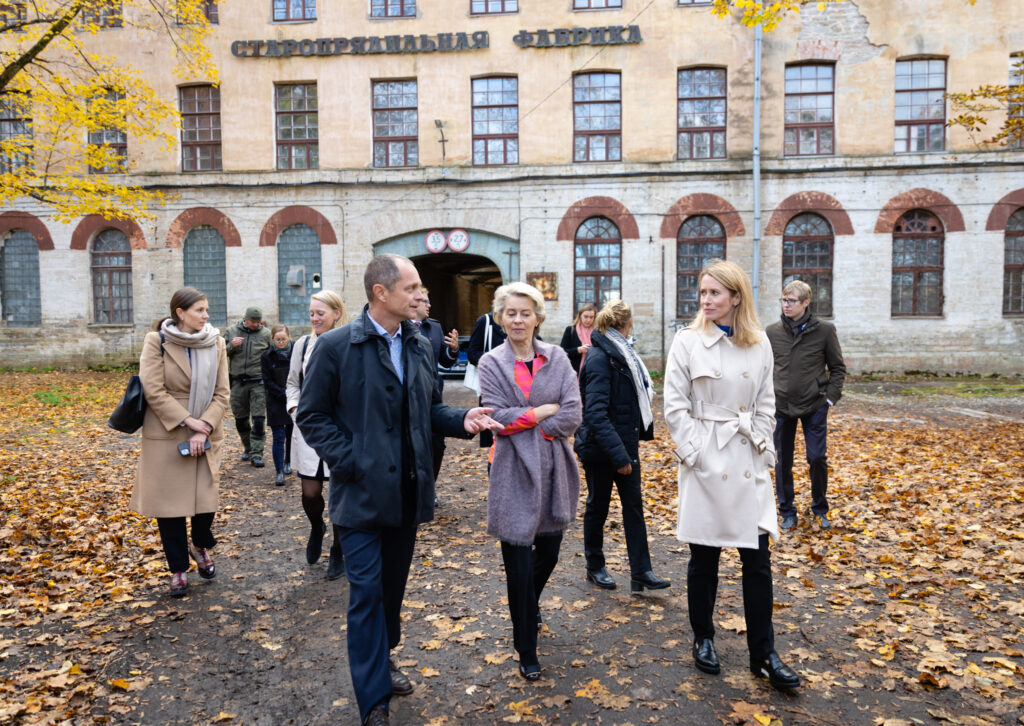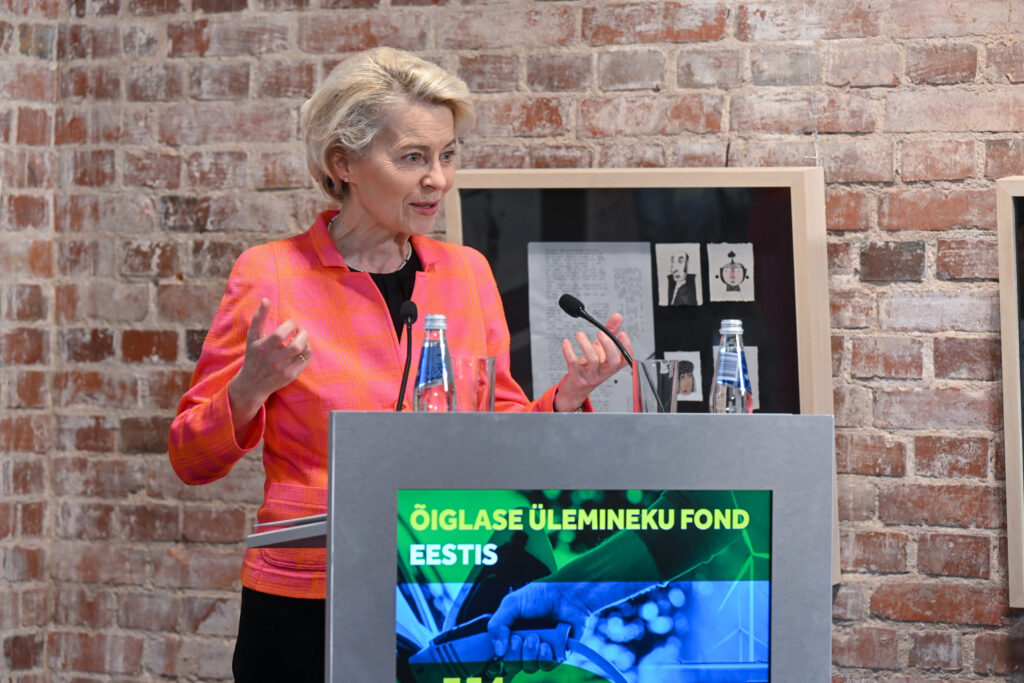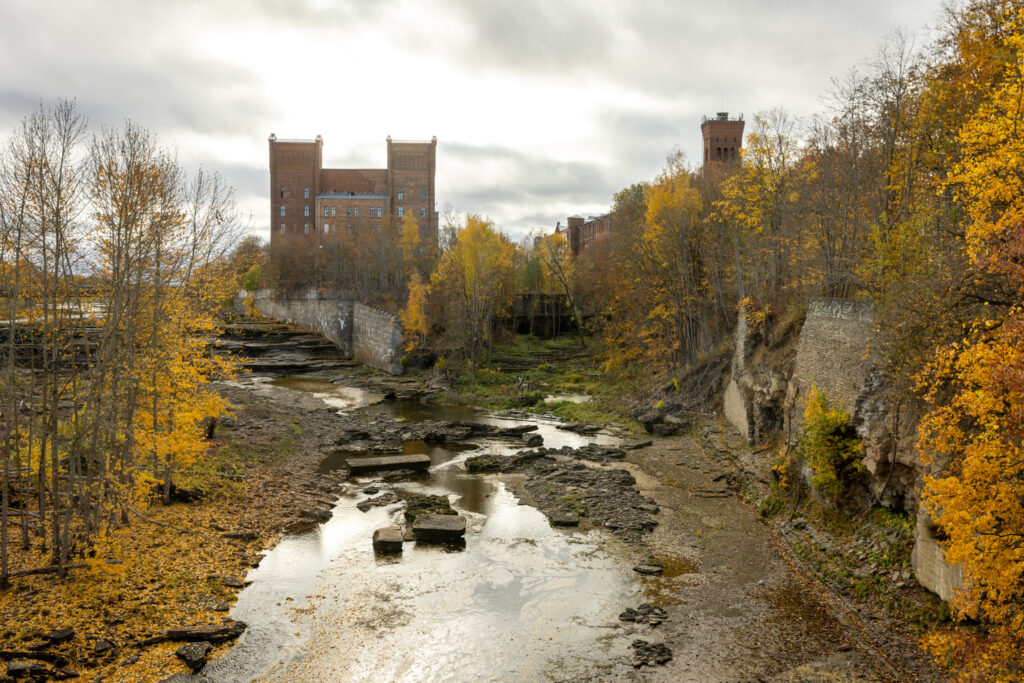Ida-Viru County, the poorest region in Estonia, predominantly populated by Russian speakers and the location of country’s polluting oil shale industry, will receive a €354 million investment from the European Just Transition Fund (JTF) that was set up to support regions facing particularly tough challenges in the drive towards climate neutrality.
The EU investment was announced on 10 October in the Estonian border town of Narva by the European Commission president, Ursula von der Leyen, on her visit to the country. According to the Estonian government, Estonia receives “the most money per capita” from the JTF, compared with the other EU countries.
“The European Union is investing €354 million in Ida-Viru County to support your region’s fair transition to a modern, low-carbon economy,” von der Leyen said in her speech at the launch event in Narva – a relatively neglected town of 55,000 people, 88% of them Russian speaking.
Von der Leyen knows Narva well – one of her ancestors was Ludwig Koop, a German entrepreneur who in 1857 built the largest cotton spinning mill in Europe on the island of Kreenholm in the town, employing 4,500 people (the mill went bankrupt in 2010).
“Indeed, the two words – Narva and Kreenholm – were words that accompanied me throughout my childhood,” she recalled. “So it was wonderful for me today to walk through Kreenholm and to see all the childhood fairy tales that I heard of.”

The EC president said that one of the fields receiving the EU investment was the wind energy.
“In Estonia, three major offshore wind farms are already planned, with a total capacity of almost 1,500 megawatts. This is nearly as much as your country’s current power generation capacity, which largely comes from this region. This is why the energy company, Eesti Energia (Estonia’s state-owned main energy company – editor), has been able to announce that all its power production should come from wind and solar by the end of this decade,” von der Leyen noted.
According to the EC president, the Just Transition Fund “will help create new companies or modernise the old ones that are already in the region” and “it will bring research and new jobs”.
Von der Leyen underlined the importance of renewable energy, saying that “renewables have a long-term growth perspective, which fossil fuels do not have”.
She said the investment plan was “designed as an open process, an inclusive process”. “We want everybody on board,” the EC president stated.

The Estonian government said in a statement that the jobs created by the Just Transition Plan “must be created in the region within the next seven years”.
“Dozens of companies have already taken an active interest in the new opportunities and have already undergone the necessary pre-consultation, with some of them already working on their applications.”
The government didn’t, however, specify as to who can apply for the funds and how – apart from providing a page full of bureaucratic jargon, but without a simple and specific information for applications.

